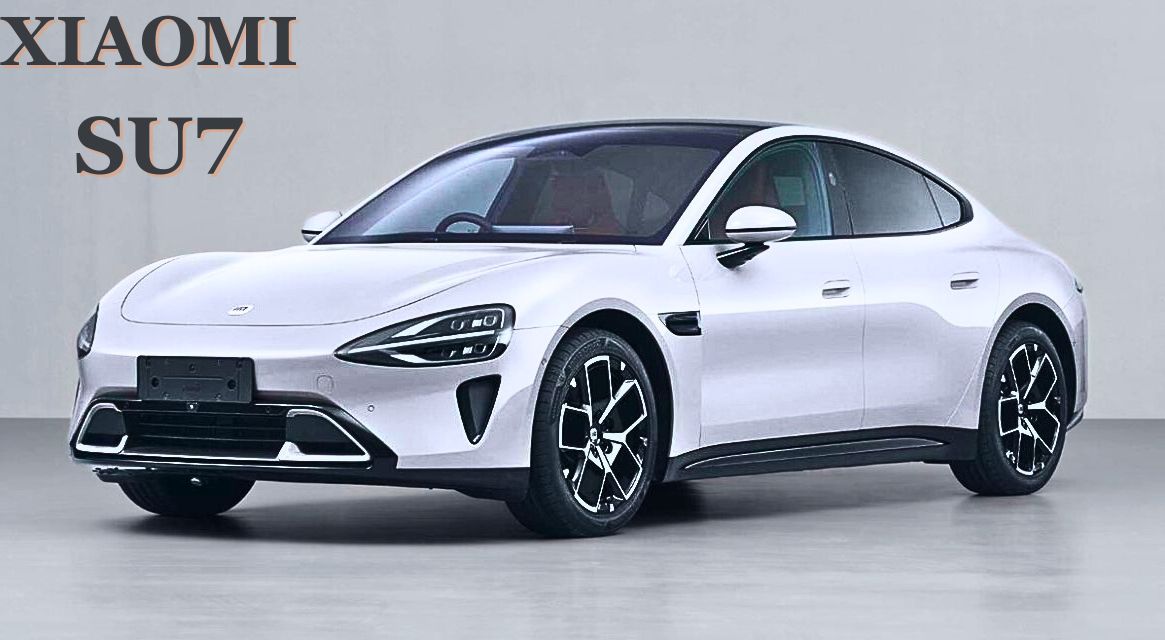Xiaomi’s first EV Revealed Globally as Xiaomi-SU7
Xiaomi, the renowned smartphone maker, has ventured into the electric vehicle (EV) realm with its first creation, the Xiaomi SU7 sedan. The company recently applied for a sales license for this highly anticipated EV in China, revealing some of its specifications. Contract manufacturing for the Xiaomi SU7 will be undertaken by Beijing Automotive Industry Holding Co. Ltd (BAIC), and it was initially recognized by the codename MS11.
Xiaomi officially entered the electric vehicle manufacturing arena in March 2021, announcing a substantial investment of 10 billion yuan (approximately 1.4 billion USD) into the project. The SU7, poised to be the company’s debut electric sedan, has now been unveiled ahead of its highly anticipated launch in China, bringing a new player into the evolving landscape of electric mobility.
The 5-door SU7 sedan is set to redefine the driving experience, entering production in December 2023 and promising deliveries from Mid- 2024. Details regarding the SU7’s specifications were uncovered through a Chinese Ministry of Industry and Information Technology (MIIT) filing, providing an insightful preview of what this electric sedan has to offer.
In China, the regulatory process requires every car to be approved by the local regulator before entering the market. The Ministry of Industry and Information Technology (MIIT) publishes a list of vehicles that successfully undergo the monthly homologation process, unveiling images and specifications of cars that manufacturers may not have officially launched yet.
Xiaomi-SU7 Dimensions
The Xiaomi SU7 is an electric sedan boasting dimensions of 4997/1963/1455 mm and a wheelbase of 3000 mm. It will be available with two-wheel options: 19″ and 20″, paired with tire specifications of 245/45 R19 and 245/40 R20, respectively. Xiaomi presented two versions of the SU7, one with lidar and one without, with the lidar system installed behind the front windshield.
The Xiaomi SU7’s curb weight is specified as 1,980 kg for the lower trim, with a top speed limited to 210 km/h. Meanwhile, the top trim model’s curb weight increases to 2,205 kg, accompanied by a top speed of 265 km/h. According to the MIIT filing, three versions are listed: SU7, SU7 Pro, and SU7 Max, with certain trims featuring an active rear wing for enhanced aerodynamics.
The interior of the SU7 is designed to offer two color options, allowing customers to choose between having lidar on the front windshield or not. Notably, the SU7 will come with an Electronic Toll Collection (ETC) function, enabling automatic toll payments on toll roads without requiring the driver to stop the vehicle.
Powering the in-car system is Xiaomi’s Hyper-OS, an in-house developed operating system capable of powering both smartphones and cars. This integration of technology emphasizes Xiaomi’s commitment to providing a seamless and innovative driving experience.
Xiaomi-SU7 Design
Xiaomi-SU7 formerly known by the codename MS11, the Xiaomi SU7 is characterized by its dimensions, measuring 4,997mm in length, 1,963mm in width, and 1,455mm in height. The wheelbase, a key factor in determining interior space, stands at 3,000mm. The electric sedan will be available in three variants: SU7, SU7 Pro, and SU7 Max. The curb weight varies between 1,980-2,205kg, depending on the chosen variant.
Drawing design inspiration, it seems, from the Tesla Model 3, a market rival, the SU7 exhibits teardrop-shaped LED headlamps, an air dam on the front bumper, and a gracefully tapering bonnet. The design language further includes a sloping roofline, connected LED taillights, and a B pillar camera, offering a distinctive visual appeal. The vehicle will be offered with a choice of 19- and 20-inch wheels, with higher-spec variants featuring an active rear wing and Lidar technology installed behind the front windshield.
Xiaomi-SU7 Features
An interesting feature observed in the pictures is a camera on the B pillar, suggesting that the Xiaomi SU7 may come equipped with a face recognition unlocking function, enhancing its security and user experience.
While specific details about the interior are yet to be disclosed, expectations include a 3-spoke steering wheel, dual displays for infotainment and instrumentation, and the incorporation of autonomous driving technology. The SU7 is set to run on Xiaomi’s in-house developed Hyper-OS, showcasing a seamless integration between smartphones and car systems.
Xiaomi-SU7 Powertrain
Xiaomi-SU7 powertrain offers two options: a Rear-Wheel Drive (RWD) variant with a 220 kW motor and an All-Wheel Drive (AWD) model with a remarkable 495 kW maximum power (220 kW + 275 kW). The LFP battery pack is sourced from BYD for the more budget-friendly trim, while the pricier option incorporates a ternary NMC battery from CATL.
Beneath the sleek exterior, the Xiaomi SU7 boasts two powertrain configurations. The rear-wheel-drive (RWD) system offers 295bhp, delivering a powerful and dynamic driving experience. Alternatively, an all-wheel-drive (AWD) setup packs a substantial 664bhp, providing enhanced performance and versatility. Two battery pack options are available: a base variant featuring a BYD-sourced LFP (lithium-ion phosphate) Blade battery and a top-spec variant equipped with a more expensive NMC (ternary) type battery pack. The detailed specifications of the battery remain undisclosed at this point.
For the RWD lower-spec trims, a top speed of 210km/h is claimed, emphasizing a balance between performance and efficiency. In contrast, the AWD range-topping model boasts an impressive top speed of 265km/h, catering to enthusiasts seeking a more exhilarating driving experience.

